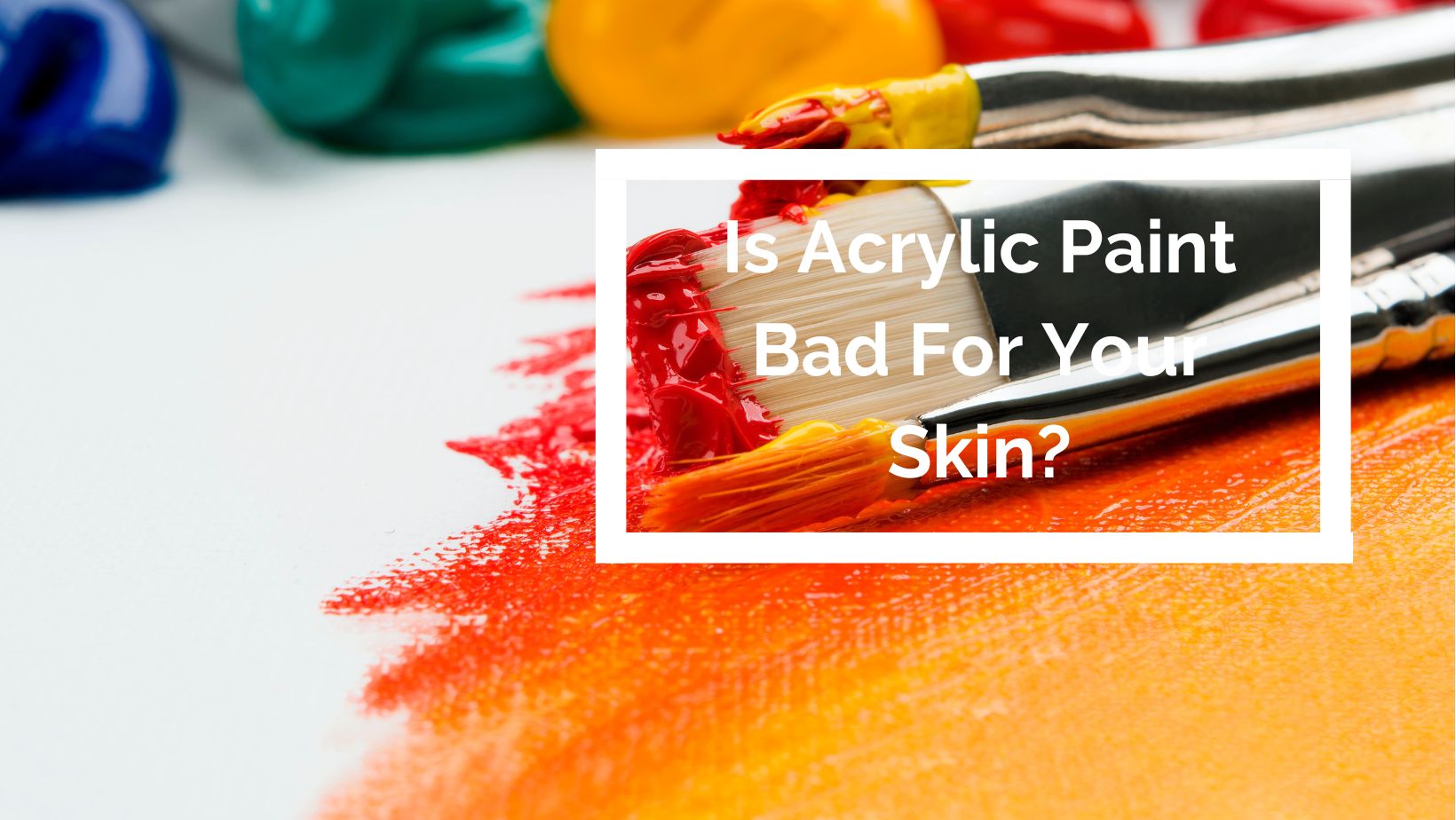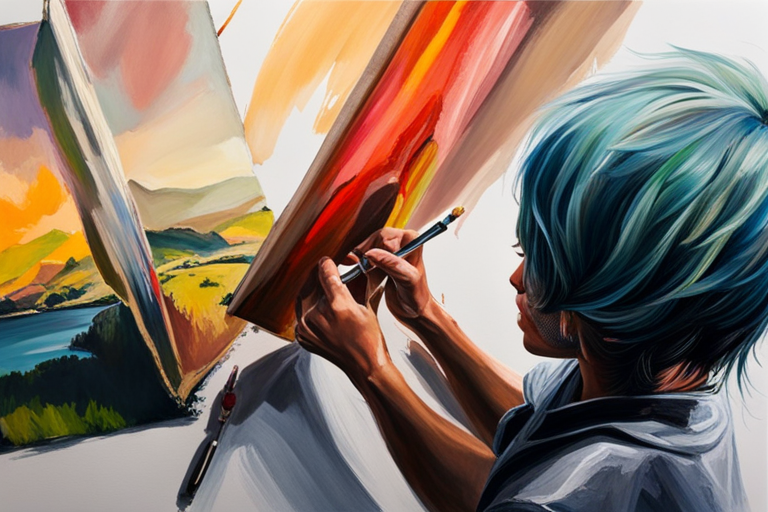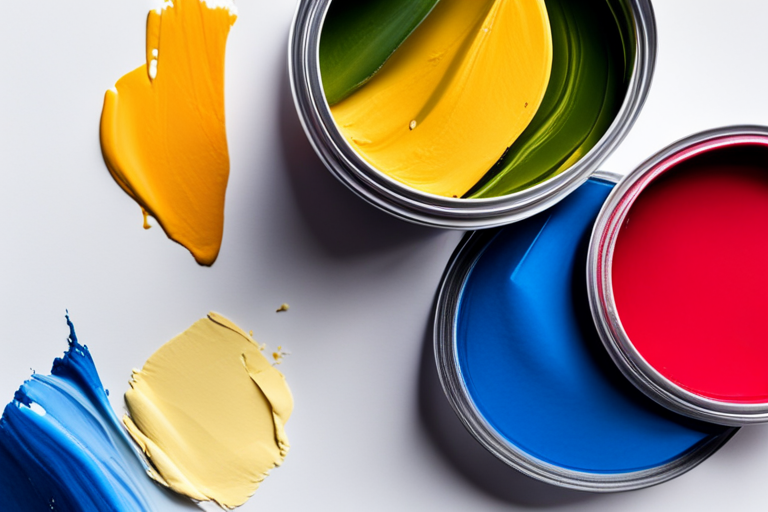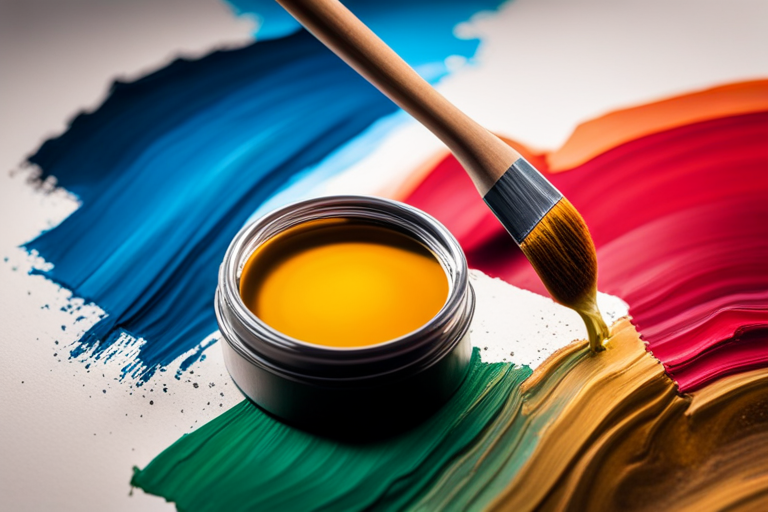My recent experience with acrylic paint has brought to light the dangers of applying paint to the skin, something I was previously unaware of. However, my recent experience has made me more aware of the risks associated with skin contact with certain acrylic paint strains. The last thing you want is to expose yourself to harmful chemicals and allergens that can harm your skin in the long run. This led me to delve deeper into this issue; exploring how acrylic paint enters the body through our skin, lungs and even mouth, and how harmful it can be to our health.
In this guide, we will explore the key factors you should consider before you purchase acrylic paint, how to ensure your safety while using acrylic paints, and the steps to take should you experience any adverse reactions. Let’s get into it!
Read The Label

The first step is always to read the label. Ensure that the paint you’re buying is non-toxic, water-based, and safe for skin contact. This is especially important if you’re going to be using it on your body, or if you’re purchasing it for your children. Non-toxic paints are generally made with ingredients that are safe for people of all ages and won’t cause harm or irritation to your skin.
When shopping for paints, always opt for water-based products instead of oil-based paints. Water-based paints are much easier to wash off your skin and tend to be less harsh on your skin. Acrylic paint, for example, is water-based and generally safe for skin contact, as long as you follow the manufacturer’s guidelines.
It is therefore important to read the label of paint before buying it and make sure it is non-toxic, water-based, and safe for skin contact. By doing so, you’ll be able to enjoy your art and craft projects without any worries about damaging or irritating your skin. Remember, safety always comes first!
Wear protective

Wear protective clothing, such as gloves, a face mask, and eye protection when using acrylic paints. These items not only protect your skin but also your respiratory system. Remember that exposure to these chemicals can have long-term effects on your health.
So, it’s worth investing in some safety gear to keep yourself safe. You can find reasonably priced sets designed specifically for painting on any online craft store.
Another good rule of thumb is to work in a well-ventilated area. Whether you’re working inside or outside, make sure that the area is well-ventilated. Opening windows, using a fan, or even wearing a respirator can help keep the fumes away from you. Also, don’t forget to follow the paint manufacturer’s instructions when it comes to cleanup. Some brands are easier to clean up than others, so it’s worth doing some research beforehand.
The most important thing to remember when using acrylic paint is to take good care of your skin. While it’s a fun and creative medium, it can also be harmful to your health if not used safely. Remember to wear protective clothing, work in a well-ventilated area, follow the paint manufacturer’s instructions, and have a good time painting.
Wash your skin immediately after contact with acrylic paint
I’m sure I’m not the only one who has found acrylic paint on my skin after a painting session. At first, it might seem like no big deal – just wait until it dries, right? Wrong. This is where my buying guide tip comes in: wash your skin immediately after contact with acrylic paint.
Acrylic paint contains chemicals that can be harmful to our skin if we leave it on for too long. Even if it’s just a small amount on your hand or arm, it’s best to wash it off right away. I’ve made the mistake of thinking I was fine and leaving the paint on my skin for a few hours, only to develop an itchy, red rash later. Trust me, it’s not worth the risk.
To wash off acrylic paint, I recommend using warm, soapy water. Don’t just rinse it off quickly – be sure to actually scrub your skin to make sure all the paint is gone. You can also use a dermatologist-approved cleanser if you have sensitive skin.
The most important step in ensuring your health and safety while painting is to wash your skin immediately after contact with acrylic paint. Trust me, your skin will thank you.
Avoid using Acrylic Paint on sensitive areas of your body

If you’re anything like me, you’ve probably dabbled in the wonderful world of body paint. It’s a fun way to express yourself, create unique designs, and feel like a work of art. However, it’s important to be aware of the products you’re using on your skin, specifically when it comes to acrylic paint.
Acrylic paint is a popular choice for body painting, as it’s affordable, easy to find, and comes in a variety of colors. However, it’s not the best option for sensitive areas of your body, such as your face near your intimate areas. Here’s why:
Acrylic paint is made up of pigments mixed with a synthetic resin binder, which can contain harmful chemicals like formaldehyde, ammonia, and heavy metals. When applied to the skin, these chemicals can cause irritation, inflammation, and even allergic reactions. Additionally, the paint can be difficult to remove, resulting in friction and further irritation to the skin.
So what should you use instead? Look for body-safe paints specifically designed for the skin, such as water-based or alcohol-based paints. These options are formulated to be gentle on your skin, easy to remove, and come in a wide range of colors.
Remember, the health of your skin should always be a top priority, and using the right products is crucial for achieving a fun and safe body painting experience. Happy painting!
Visit a doctor if irritation persists after washing the skin
Have you ever had a skincare product that seemed to irritate your skin no matter how many times you washed it off? I know I have. It can be frustrating to spend money on a product only to have it cause irritation and discomfort. That’s why I always recommend visiting a doctor if irritation persists after washing the skin.
If you’re dealing with persistent irritation, it’s possible that you have an undiagnosed skin condition or even an allergic reaction. A doctor can help you identify the root cause of the irritation and provide targeted treatment options. They might also recommend alternative products that are less likely to cause irritation.
It’s important not to ignore persistent skin irritation. Not only can it be uncomfortable, but it can also lead to further complications like scarring or infection. Seeing a doctor as soon as possible can help you avoid these issues and get back to feeling comfortable in your own skin.
Of course, visiting a doctor can be intimidating or even expensive. If you’re unable to see a doctor right away, consider consulting with a pharmacist or esthetician. They can provide helpful advice on alternative products or soothing ingredients to help calm your irritated skin.
As a rule of thumb, if you experience persistent skin irritation, seek medical attention as soon as possible. It’s always better to be safe than sorry when it comes to your skin health.
Conclusion
The use of acrylic paint on sensitive areas of your body and the presence of toxic chemicals can make it pose some risk of harm to your skin. Make sure that the acrylic paint is water-based and non-toxic before applying it to your skin, as not all acrylic paints are the same. Additionally, wearing protective clothing such as gloves, face masks, eye protection, washing your skin immediately after coming in contact with acrylic paint can help reduce any potential harm. It is important to remember these safety precautions when using any paint, and taking care of your skin will ultimately improve your overall well-being. By being mindful and informed when it comes to acrylic paint, you can enjoy your creative endeavors without compromising your health.




Leave a Reply